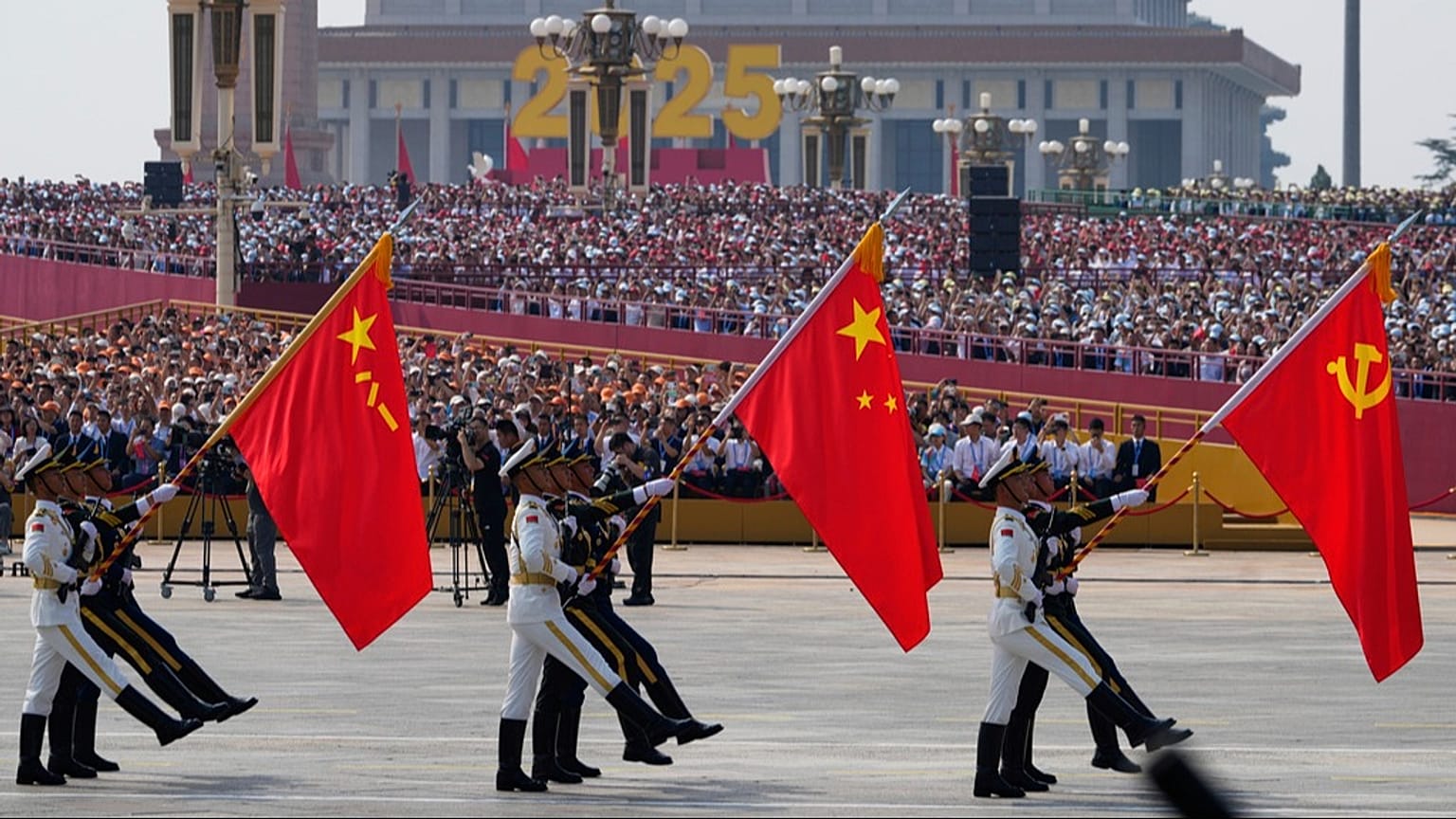China 'Does Not Fear Violence,' Xi Jinping Declares at Largest Military Parade
Chinese President Xi Jinping declared China 'does not fear violence' during the nation's largest-ever military parade, attended by leaders from Russia and North Korea, showcasing advanced weaponry and signaling strategic alliances.

China staged its largest military parade to date in Beijing on September 3, 2025, marking the 80th anniversary of Japan's World War II surrender. President Xi Jinping presided over the event, delivering a forceful speech in which he asserted that China 'does not fear violence' and is 'unstoppable,' according to translations from state media. The parade was attended by prominent figures including Russian President Vladimir Putin and North Korean leader Kim Jong Un, highlighting China's growing alignment with other authoritarian states. Western leaders notably did not attend, reflecting increasing geopolitical divisions.
Strategic Significance and International Guests
Xi's declaration and the parade's guest list drew attention to an emerging bloc some analysts have dubbed the 'axis of upheaval.' Alongside Putin and Kim, Iranian President Masoud Pezeshkian and 22 other leaders were present, underscoring efforts to forge deeper military, economic, and political ties among these nations. The absence of Western representatives, and pointed remarks from U.S. President Trump on social media, amplified speculation about coordinated opposition to U.S. interests. Foreign policy experts warn that this public display of unity could signal a shift in the global balance of power and increased resistance to Western influence.
Advanced Weaponry and Military Technology
The parade showcased an array of cutting-edge military hardware, some revealed for the first time. Among the most notable were the LY-1 laser weapon, capable of disabling electronics or blinding pilots, and the AJX002 giant submarine drone designed for reconnaissance and surveillance. China's arsenal also included AI-powered drones, stealth attack drones like the GJ-11, and 'robotic wolves'—four-legged robots intended for mine-sweeping, reconnaissance, or direct combat operations. The unveiling of the DF-5C intercontinental ballistic missile, with a range of 12,400 miles and the ability to carry up to 12 warheads, underscored China's strategic deterrence capabilities. Other nuclear-capable missiles, such as the DF-61 (mobile-launched) and the JL-1 and JL-3 (aircraft and sea-launched, respectively), further demonstrated the breadth of China's modernization efforts.
Defense analysts noted that China's approach to integrating artificial intelligence into military systems is more aggressive than that of many Western countries, with officials expressing confidence in their ability to control AI technologies. Observers suggested that China is learning from Russia's use of drones in Ukraine, aiming to overwhelm adversaries through technological superiority and mass deployment.
Geopolitical Implications and Public Messaging
Xi Jinping's speech, delivered before a crowd of thousands and broadcast internationally, framed the parade as a choice between 'peace or war, dialogue or confrontation.' While the official messaging emphasized China's desire for peace, the sheer scale of the event and the advanced weaponry on display sent a clear signal of military preparedness and resolve. The spectacle also served to rally domestic support and project strength amid rising tensions with the United States and its allies. Critics caution that such militaristic displays may further inflame regional rivalries and complicate efforts at diplomatic engagement.
The parade, widely covered by global media, has been interpreted as both a celebration of historical victory and a calculated demonstration of contemporary power. As China continues to modernize its military and strengthen alliances with Russia, North Korea, and Iran, the event raises urgent questions about the future of international security and the evolving dynamics of global conflict.